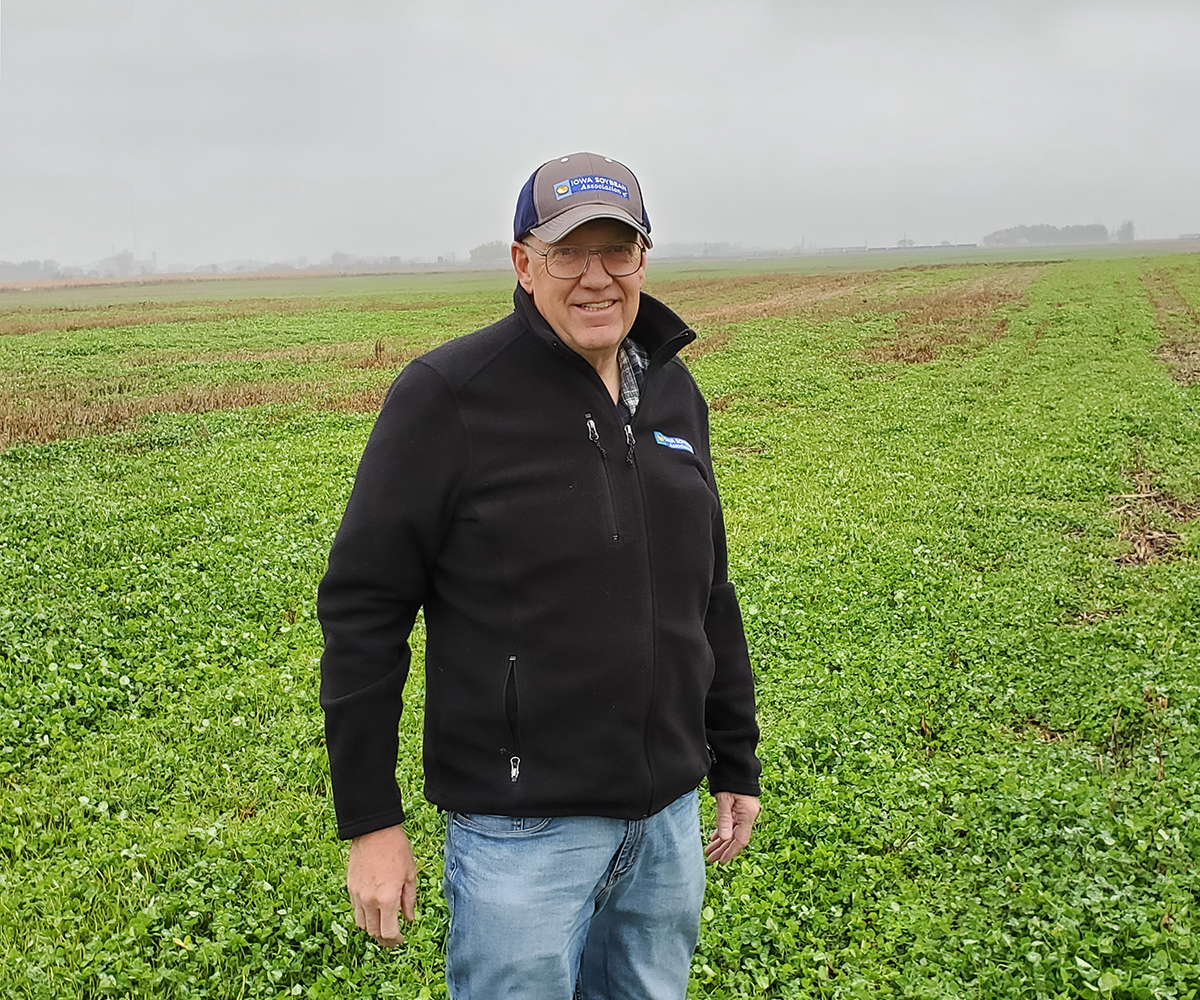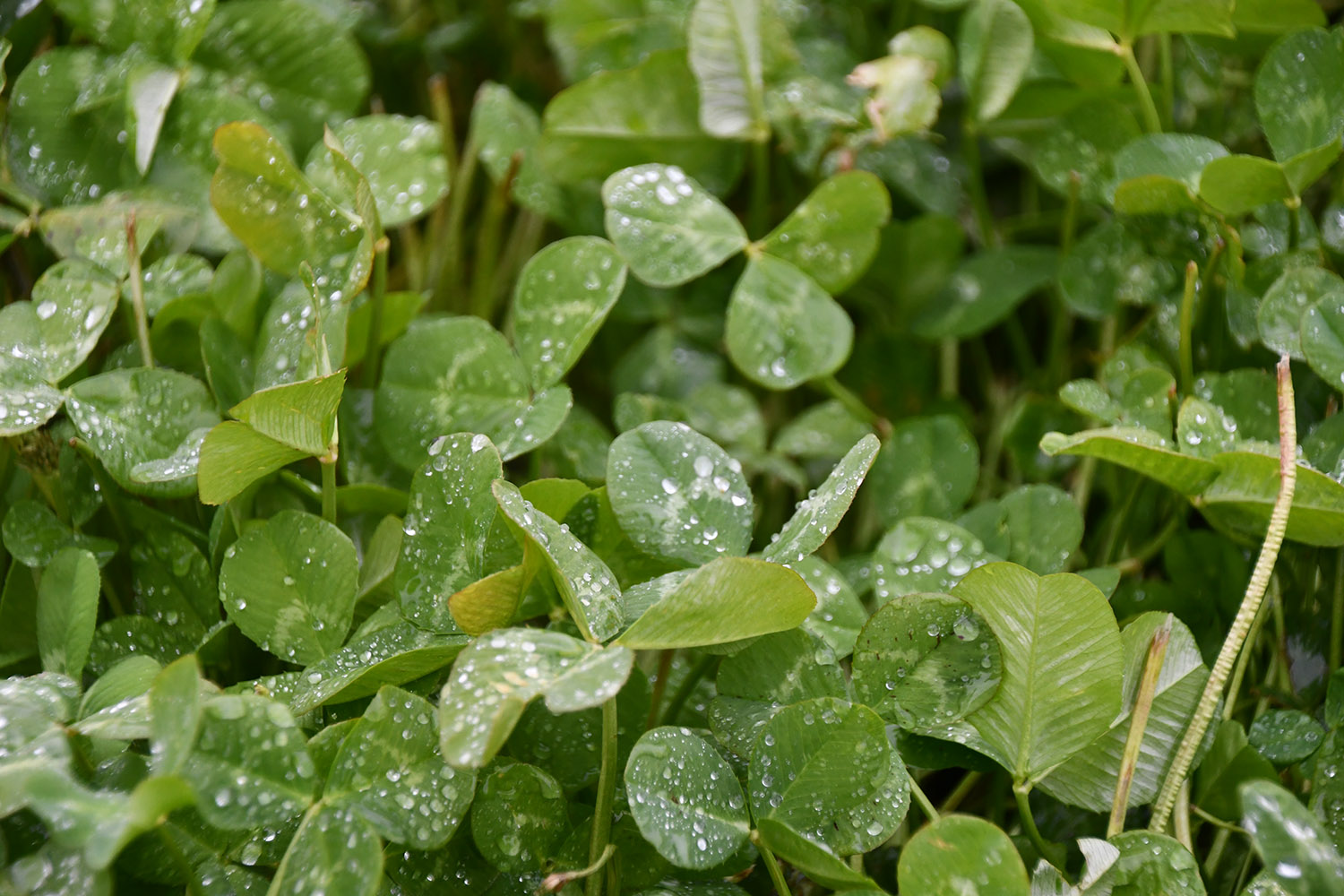
Chuck White, farmer from Spencer (Photo: Iowa Soybean Association)
Early adopter continues adapting to boost production
January 18, 2022 | Aaron Putze, APR
Farming isn’t work for Chuck White. Rather, the Spencer farmer sees the land he farms as a work in progress.
“I’ve always been an early adopter,” he says while surveying a 30-acre stand of cover crop on land he farms with his brother Kevin and son Patrick south of Spencer. “I’m a fan of trying new things and seeing the improvements that come with innovating.”
Spend a few minutes in his company and it becomes obvious the Iowa Soybean Association (ISA) district director’s wheels are constantly turning. It’s why he’s a believer and active participant in ISA’s Research Center for Farming Innovation (RCFI).
“I like to look at new ideas and develop new ways of doing things for agriculture,” White says. “Producing a crop using fewer inputs is good for my bottom line and goes hand-in-hand with better soil and cleaner water.”
His first activity involving the ISA research team was a 2010 soybean plant population trial.
“It yielded numerous findings, chief among them — higher populations and seed costs don’t always translate to more yield,” White says.
New adventure
He’s also worked side-by-side with ISA’s research team on nitrogen trials involving manure application on corn ground. His newest adventure: choosing Dutch clover instead of cereal rye as a cover crop.
“I’ve always wanted to plant a perennial as a cover crop,” he says. “One day, while walking across the farm, I noticed the Dutch clover. It grows everywhere and with little effort, so I thought, ‘Why not try it as a cover?’”
After consulting with ISA researchers and Iowa State University agronomists, White was motivated to give it a try. Last spring, he seeded Dutch clover with a drill on 30 acres of ground planted to soybeans.
What also sets White apart is his unabashed willingness to fail.
“I didn’t have much of a soybean crop come June — in fact, I about tilled the whole thing under and started over,” he admits. A combination of too much cover crop and a wet start to the growing season was taking its toll on his soybeans and potential return on investment come harvest. But White played the patience card.
The weather soon turned, the beans matured, and harvest came and went.
“The field yielded about 40 bushels per acre,” White says. “It usually does mid-50s. But I’m it for the long haul, looking to building soil health, reducing fertilizer costs and seeing what next year’s corn crop yields.”
White is so confident in his approach that he seeded an additional 15 acres to Dutch clover this fall. The 45 acres will be strip-tilled and planted to corn next spring. He’ll apply herbicide with a row bander, so it won’t impact the clover. “Most farmers like to broadcast because the bander takes more time,” he says. “But for smaller farmers who have some additional time, it could prove to be a very good system.”

White's using Dutch clover as a cover crop to:
- Forgo establishing a new cover crop annually.
- Improve weed control.
- Reduce herbicide use and expense.
- Sequester nutrients more effectively.
- Generate nitrogen for next year’s corn crop. White’s hopeful the Dutch clover will provide most of the nitrogen needed. If not, he’ll supplement with chicken litter and Y-drop nitrogen directly into the row during next year’s growing season.
- Prevent the establishment of white mold.
Using less nitrogen is appealing as retail prices double and triple from a year ago due to a stressed supply chain.
“You might still get product, but it’s a lot more expensive,” White says. “So, the combination of better yields and lower production costs as a result of planting a cover crop is very appealing.”
Farmer agronomist
White encourages farmers to pull soil samples to determine the agronomic needs of a field and inputs needed to produce a profitable crop. He pulls 15 samples per 10 acres with an eye on residual nitrogen.
“You have to be an agronomist to be a farmer,” White says. “Get in your fields and take the time to know what’s there so you can add what’s needed and not spend money you don’t have to.”
It’s this hands-on approach that underscores the value of the RCFI. The ISA research team is there to lend a hand, and they’re among the best in the business, says White.
“Make your soybean checkoff investment work by having it go to work on your farm.”
White, who founded Agriland Farm Management and Realty in 1998, says early winter is the time of year to make the most of the next growing season.
“An entire year of profitability can revolve around getting the right advice and information at the right time,” he says.
Engaging with ISA’s RCFI pays huge, especially for farmers who want to maximize inputs, productivity, stewardship and their creative juices.
“ISA’s researchers are always meeting more than halfway with ideas and creative approaches,” he says. “They ask the questions. They have an entrepreneurial spirit. They believe that better soil and water stewardship doesn’t come at the expense of yield, but in partnership with it.”
The serial entrepreneur also relishes keeping up with the times with the help of ISA.
“When new technology comes along, I want to be part of it. It’s about continually improving operations by tying together production, environment and economics. ISA’s RCFI is driven to deliver that and more,” White adds.
For information on the Dutch clover cover crop project, contact White at white@ncn.net or Scott Nelson, RCFI sr. field services program manager at snelson@iasoybeans.com.
Back